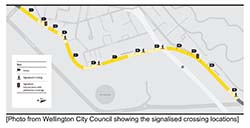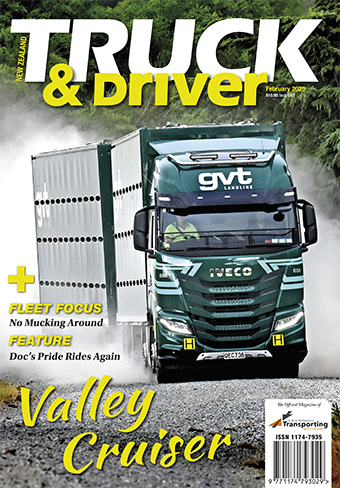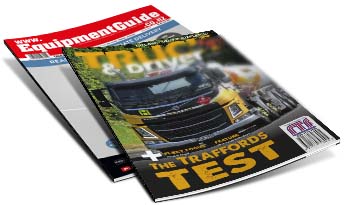
Coalition of transport groups calls for re-think on Thorndon Quay raised pedestrian crossings plan
Posted: 25-Jul-2024 |
Road freight peak body Ia Ara Aotearoa Transporting New Zealand has joined with Fire and Emergency New Zealand, the Automobile Association, New Zealand Heavy Haulage and the Bus & Coach Association in calling for Wellington City Council to reconsider plans for five raised crossings to be incorporated at signalised crossings along a 1.7km section of Thorndon Quay.
The raised crossings form a part of substantial upgrades to Thorndon Quay that includes peak hour bus lanes, a two-way cycle path, improved lighting and planting, and parking changes. The project is due for completion in 2025.
In a letter to Wellington Mayor Tory Whanau sent last week, the group emphasised that while safety is a critical concern for all organisations, the problems posed by raised platforms in particular had not been adequately considered.
In response dated 23 July, the Mayor advised that the Council’s Environment and Infrastructure Committee will reconsider the plan to install the raised platforms, and consider public submissions on 1 August.
Problems identified by the transport groups associated with raised platforms include:
For the heavy haulage freight sector (with gross weights between 50 – 100T) who have to use this route, each transporter will need to slow to 10 km/h at each raised crossing, which will slow all other traffic. In addition, there will be increased wear on transporters and increased noise as trucks slow down and speed up. Productivity losses for commercial operators and extended journey times will add to the damaging perception that Wellington City is better avoided where possible. Damage to large passenger service vehicles and freight vehicles and increased maintenance costs. Parts that should last the life of a vehicle are being damaged, at considerable expense. Delays and disruptions for fire and ambulance services with stations located in the area. Even if operating under lights and sirens, the requirement to slow at five raised crossings could easily add a 50-60 second delay to response times. Bearing in mind that FENZ have an emergency response target of 8 minutes to get to a site, that additional time is substantial.
Transporting New Zealand Interim Chief Executive Dom Kalasih said that the transport groups had met with Council officials, and several Councillors to seek additional details about the project, and the basis for the raised platform use. This follows earlier submissions from the various groups throughout the formal consultation process.
“Our shared concerns are squarely focused on the raised platform element of the five signalised crossings. Unfortunately, Council officials haven’t been able to demonstrate why so many raised platforms are required to improve safety outcomes. Accordingly, we’re very pleased that the Council’s Environment and Infrastructure Committee will review the raised platform installation on 1 August.”
“The lights at the crossings alone will achieve the function of stopping traffic while avoiding unnecessary damage and wear on vehicles as well as reducing the delay to emergency service vehicles operating under lights and sirens. There is no need for five big speed humps in just under 1700 metres on a well-designed, modern piece of Road.”
“We hope the Council will reconsider its position and install the signalled crossings without raised platforms. With some pragmatic decision making we can avoid a costly and disruptive piece of roading design on a key commuter and freight route, while ensuring the safety of road users and pedestrians.”




 + EQUIPMENT GUIDE - FREE
+ EQUIPMENT GUIDE - FREE
